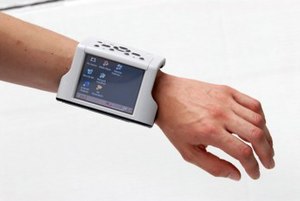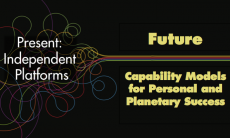One could argue that 2013 was the Year of Content Marketing. It was the year that Google – the most influential information systems company on the planet – updated its search methodology to emphasize content over coding. It was the year that Content Marketing entered the mainstream of business and the marketing function. It has been a year when business after business has re-emphasized the creation of blog content and other company-generated content to attract customers and stay on top of current trends. 2014 will certainly be another year of Content Marketing. In my travels, I am still stunned by the number of business people who have literally never heard the phrase – but who then get very excited when I explain what it is and why it is so important.

While many businesses will still be playing catch-up in 2014, the world is moving ahead. In the year ahead, I will be following these and other emerging storylines. This isn’t meant to be a comprehensive list – instead, it reflects what I’ve been hearing and seeing in Silicon Valley and beyond.
- Wearables: It took me awhile to understand the big deal about this emerging tech category, but now I get it. Wearable technology goes well beyond the Dick Tracy smartwatch and really addresses all the ways human beings can wear microprocessors on their bodies and the ways those little computers can enhance life. For instance, you could slip on a wireless “mouse” that tracks your hand motions, instead of wrapping your fingers around a device that was invented in the 1960’s. You could have a device to monitor your overeating, a device to help you drive a car, and a device to regulate your body temperature. Just check out the stories Mashable already has on the subject.
- Sensors: The compass on your smartphone, the thermometer in your PC – those are just the simplest examples of the sensors that are embedded in our computing devices. Most smartphones also come with an accelerometer to measure the distance you are moving and a gyroscope to measure the direction. There’s the GPS sensor, of course, and a barometer to help the GPS sensor detect your altitude. One of the Next Big Things in computing is the collection and analysis of the data these and other sensors collect. Though the sensors were put into your devices for your convenience, when the information is aggregated it can be useful to society at large (or companies in particular, as you can imagine). If you have an electronic toll collection device on your windshield, for instance, it has a sensor that not only collects the toll, but also reports back on its location when you are driving on a freeway, so that we can all see how traffic is moving. In 2014 and beyond, look for ways that aggregated sensor data morphs into new products or apps. (Anyone need to know how long the wait is at airport security? There may soon be an app for that.)
- The Internet of Things: You’re already very familiar with devices that have computer chips in them – everything from digital watches to cars. But these devices generally don’t talk to other devices because they don’t have data transmission capabilities. That is changing, and fast. Soon, everyday devices such as cameras, coffee makers and refrigerators will have simple operating systems and Internet capabilities that you will be able to tap from your smartphone, tablet or PC. This is what people mean by “The Internet of Things.” If you can program your DVR from your smartphone, you are already using it.
- The Beginning of the End for Apple: Do you remember the Newton handheld device, the Apple II GS or the Mac SE? Probably not. All three were developed while Steve Jobs was in exile from Apple. The sad truth is that Apple has never introduced a successful and novel new product without Jobs at the helm. From the Apple II to the Macintosh to the iPod, iPhone, iPad and the iTunes store, it took Jobs’ golden touch to make them great. Now that Jobs is gone, I’m pretty sure Apple will fade as a market-leading company. Apple’s latest offerings (the iPad Air, iPhone 5C and 5S) are simply line extensions, not true innovations. Meanwhile, Android-powered smartphones and tablets in a variety of shapes and sizes are storming the market. Remember when Nokia, Microsoft, RIM and Palm held dominant positions in the tech sector? In their heyday, all three seemed invincible. No one thinks of them that way today. Apple likely has another couple of years in it before a lack of innovation knocks them from prominence. Unless they pull one out of the hat in 2014, this will be the year we start to see Apple’s polish start to fade.
- The Emergence of Android: Unlike Windows, iOS and Mac OSX, Android is a free and open operating system. It can be adapted for an infinite number of uses, well beyond powering smartphones. In all likelihood, Android will power The Internet of Things. It will also likely start to power almost all low-cost computing devices, and you’ll see more and more of those in 2014. Android isn’t going to win because it’s the greatest operating system, but because it is lightweight, open and free. Developers can customize it and adapt it any way they want without asking permission from a monolithic company. Android already powers 75% of the smartphones being shipped today. The only thing holding Android back is that its app store isn’t quite as robust as Apple’s. With so many Android devices in the marketplace, however, that’s bound to change.
******
What does all this mean to digital marketers? Pretty much everything. You wouldn’t be caught dead relying on a Palm Pilot or client-server software in today’s world, would you? The pace of technological change is astonishing. Whether or not you are in the tech industry, these and other fast-moving trends will reshape the way you, and your clients, do business and communicate in 2014 and beyond.





